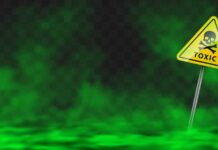Examination of technical mixtures of halogen-free phosphorus based flame retardants using multiple analytical techniques
a r t i c l e i n f o
Article history:
Received 14 December 2016
Received in revised form
23 February 2017
Accepted 24 February 2017
Available online 27 February 2017
Handling Editor: Myrto Petreas
Keywords:
Organophosphate flame retardants (OPFRs)
pSFC/MS method
NMR
RDBPP
BPA-BDPP
DOPO
a b s t r a c t
The application of phosphorus based flame retardants as replacements for commonly used halogenated flame retardants has been gaining interest due to the possibility that these compounds may have a less significant impact on human and environmental health.
Unfortunately, little is known about the chemical compositions of many of the technical products (which often are mixtures) and a single separation technique for concurrent analysis of these types of compounds has not been identified. This paper reports the results of an investigation into the constituents of three halogen free phosphate flameretardants (OPFRs), resorcinol bis(diphenyl phosphate) (RDBPP), bisphenol A bis(diphenyl phosphate)
(BPA-BDPP), and 9,10-dihydro-9-oxa-10-phosphaphenanthrene-10-oxide (DOPO). The major components of commercial samples of RDBPP and BPA-BDPP were isolated by preparative TLC and characterized by NMR.
A commercial sample of DOPO was found to be essentially pure, but its analysis is
complicated by the fact that it can exist in ring-open and ring-closed forms.
With the structures of the components confirmed by NMR, multiple analytical separation techniques (gas chromatography (GC), liquid chromatography (LC), and packed column supercritical fluid chromatography (pSFC)) were investigated for the analysis of these three technical products.
Packed column supercritical fluid chromatography allows the separation of the components of all three OPFRs, including the two forms of DOPO, in a single run.
© 2017 Elsevier Ltd. All rights reserved.



















.png)
.png)






